by ContentERP | Oct 13, 2025 | Uncategorized
How to Start a Content Writing Agency
Start by examining industries and online communities to pinpoint where quality writing is in short supply but demand is rising, such as niche blogs, small business websites, or specialized e-commerce platforms. Use tools like Google Trends for topic interest, keyword research platforms for search volume and competition, competitor audits for pricing and service gaps, and direct surveys or social media polls to capture client pain points. Summarize these insights in a simple chart comparing audience size, budget ranges, and content types so you can choose a profitable niche and tailor your services effectively.
1. Research the Content Writing Market
Develop a clear picture of where content demand is headed by following industry reports, social media buzz, and direct feedback from potential clients to uncover their evolving needs. Compare competitor portfolios to spot unaddressed niches—maybe no one’s offering localized guides or explainer videos in your area—so you can tailor your unique services. Finally, analyze competitor pricing tiers and package details to position your own rates attractively and avoid undercutting or overpricing yourself.
2. Define Your Niche and Service Offerings
Begin by pinpointing a specialization—SEO-focused articles, technical manuals, or another niche—so you can target the right clients with expertise. Next, map out your core offerings, whether that’s blog posts, in-depth white papers, or punchy social media copy, and clarify the scope, process, and deliverables for each. Finally, define what sets you apart—rapid turnarounds, deep subject-matter knowledge, personalized strategy, or data-driven insights—to create a compelling value proposition that speaks directly to client needs.
3. Build Your Team and Resources
Start by assembling a team of writers, editors, and project managers whose skills align with your content goals, making sure each role has clear responsibilities. Then deploy a content management system and collaboration tools that support version control, task tracking, and real-time communication so nothing falls through the cracks. Finally, craft a detailed style guide and workflow templates to standardize tone, formatting, and approval processes, speeding up production and maintaining consistency.
4. Develop a Business Plan and Pricing Strategy
Begin by mapping short-term targets—like securing your first clients or hitting a monthly income goal—and long-term ambitions such as expanding service offerings or building a support team, so you always know your direction and can adjust tactics. Choose a pricing strategy—per word for straightforward tasks, hourly for complex work, or a retainer for ongoing support—that balances client expectations with your revenue needs. Finally, forecast revenue by applying your rates to anticipated workload, then allocate budgets for marketing, key software tools, and daily operations to keep growth on a solid footing.
5. Establish Your Online Presence
Build a polished website that features your best samples, client testimonials, and clear contact details, making a strong first impression on visitors. Perform keyword research to infuse search-friendly terms into titles, headings, and meta descriptions, boosting your visibility on search engines. Set up and maintain business profiles on key social platforms and start a content blog with consistent posts on industry topics, tips, and project highlights to engage your audience and drive traffic.
6. Market Your Agency and Acquire Clients
Use targeted email campaigns showcasing relevant case studies, run sponsored social media ads to reach decision-makers, and tap into personal and virtual networking to forge connections. Offer complimentary website performance audits or small-scale trial projects to demonstrate expertise and lower risk for prospects, turning hesitant leads into loyal clients. Regularly attend key industry conferences, join local and online professional groups, and contribute thought leadership content to establish credibility and access new referral channels.
7. Manage Projects and Ensure Quality
A clear editorial and approval process helps ensure consistency and accountability by defining roles, checkpoints, and version control standards. Leveraging project management tools such as Asana or Trello makes it easy to assign tasks, set milestones, and monitor progress against deadlines in real time. Regularly soliciting stakeholder feedback through structured reviews and using that input to iterate on drafts ensures each deliverable meets quality expectations and adapts to changing requirements.
Conclusion
By diligently conducting market analysis, defining your service offerings, assembling a skilled team, and establishing efficient operations, you create a strong foundation for your content writing agency. From building an online presence and launching targeted marketing campaigns to implementing consistent quality checks, each step ensures you attract the right clients and maintain high standards. Now it’s time to transform this roadmap into real-world progress—set your plans in motion, monitor performance, and adjust your strategy to fuel sustainable growth.
by ContentERP | Oct 12, 2025 | Uncategorized
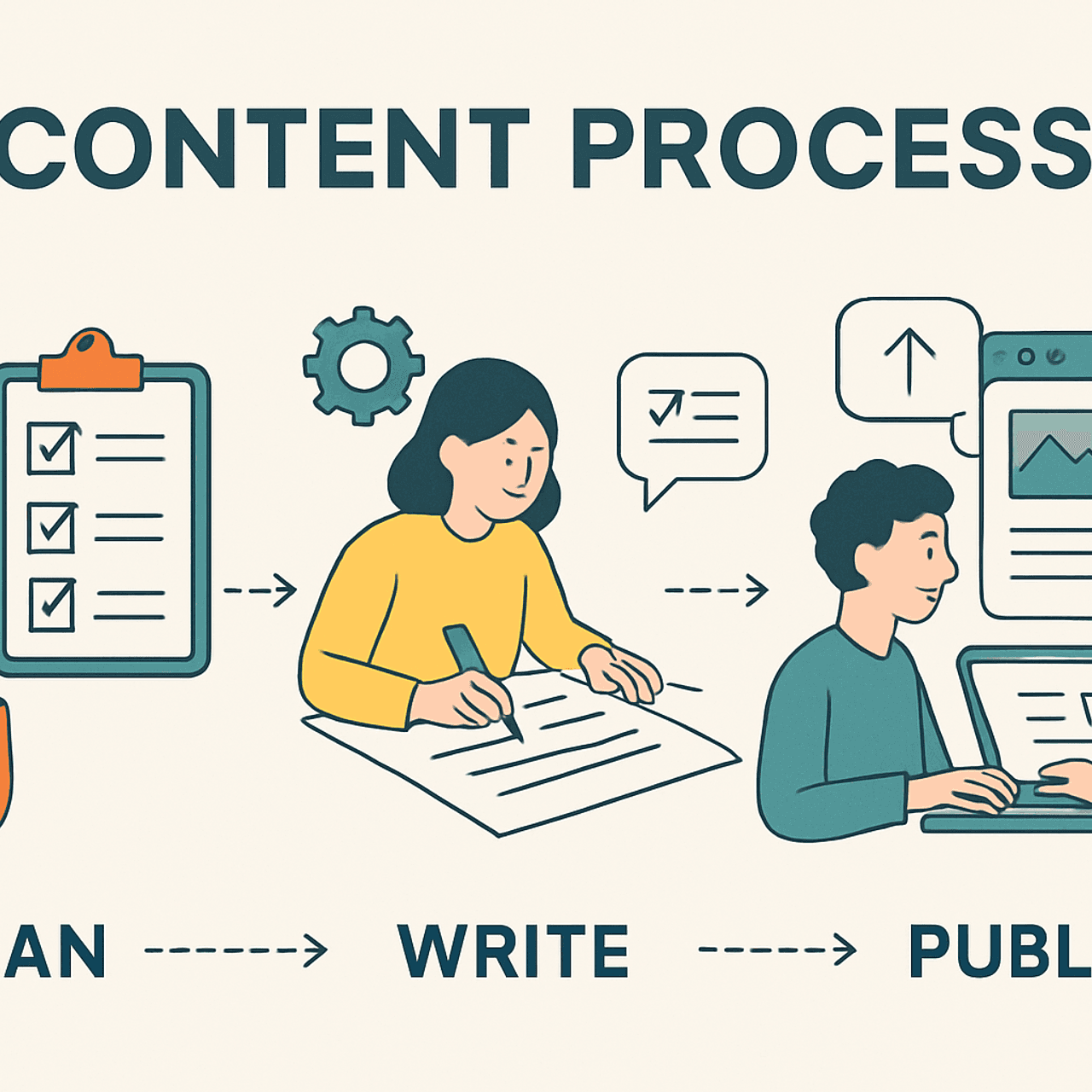
1. Introduction: Igniting Your Content Journey
Starting with a strong sense of purpose and a heart full of passion gives your content a pulse that readers can’t ignore. By following a clear content process example, you’ll unlock your creativity—watch ideas flow, structures fall into place, and your vision shine through each paragraph. You’ll walk away with hands-on, actionable insights that turn every draft into a compelling, magnetic story.

2. Why a Structured Framework Transforms Ideas into Impact
When you lock onto a structured framework, your scattered thoughts transform into chapters of an epic journey that resonate and inspire action. This clarity isn’t just for show—it elevates quality, builds unwavering trust, and ensures every message lands with purpose. By offering a clear roadmap, you invite every team member to step up, contribute meaningfully, and witness a shared vision come to life.
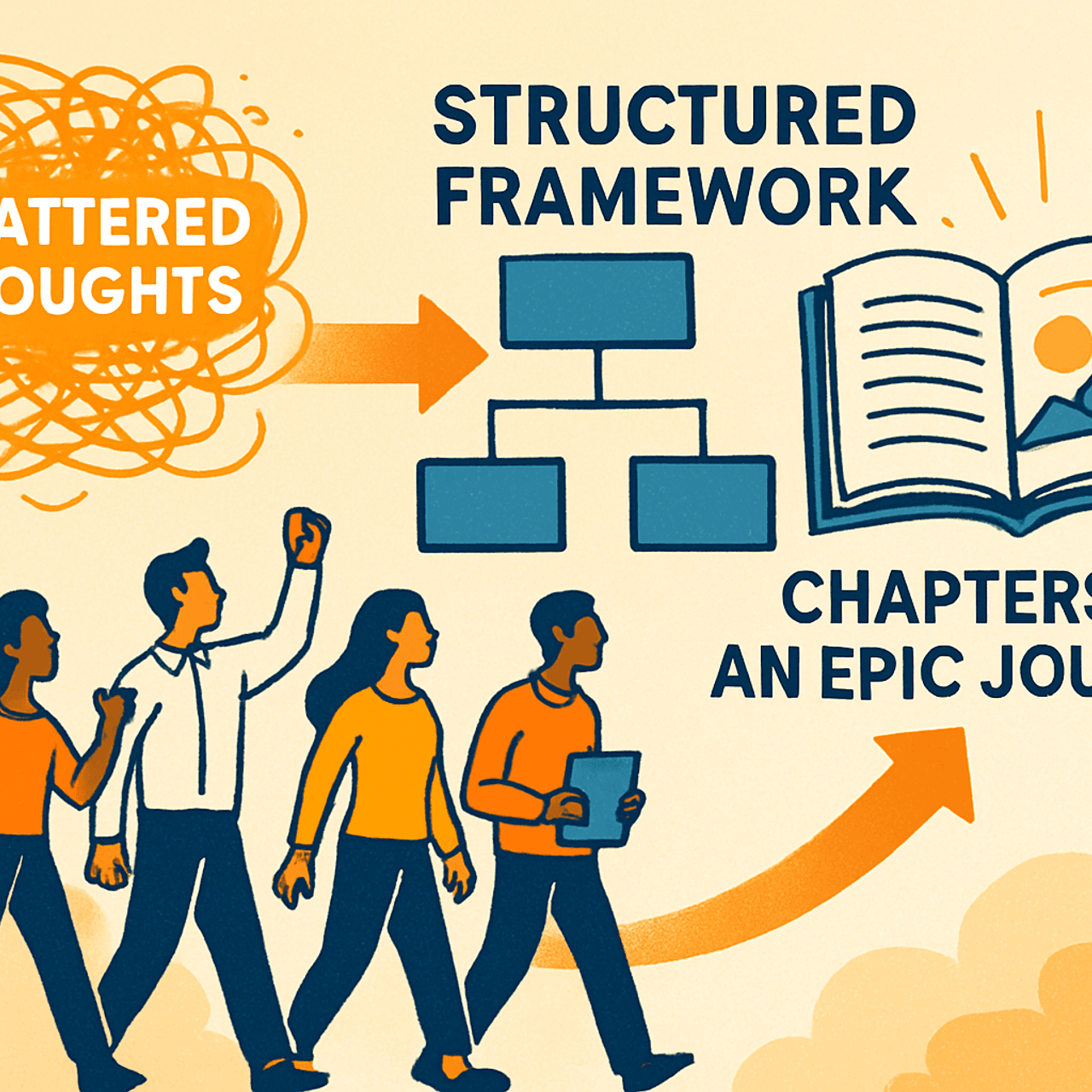
3. Defining the Content Development Process: Building Your Blueprint
Ignite creativity by charting each phase—research uncovering hidden insights like a media agency tracking trends or a nonprofit delving into community needs, creation where writers, designers and filmmakers craft vibrant narratives. Next comes review, when quality control shines through each contributor’s superpowers—editors fine-tune words, strategists ensure brand harmony—and distribution, deploying social media schedulers, email platforms or CMS integrations to amplify your message. Align every workflow with your team’s strengths and equip them with tools that feel like extensions of their talents, transforming ambitious ideas into real-world impact.
4. Setting Goals and Audience: Your North Star
When you sketch out bold, crystal-clear objectives—measurable, time-bound goals—you light a fire under your team and yourself, turning wishes into real milestones. By zooming in on who you’re talking to—learning their hopes, struggles, and jargon—you craft messages that feel like a secret handshake, sparking genuine connection. Blend cold, hard data with heartfelt empathy—charts and spreadsheets tell you where to go, empathy shows you how to get there with humanity—so every step you take resonates and drives results.
5. Content Process Example: From Concept to Completion
Watching a simple concept blossom into a full-scale blog campaign feels like seeing a seed stretch toward the sun, proving every great project starts with a spark of creativity. We mapped out key milestones and celebrated each collaborative win: – Ideation and outline sign-off – Mid-project feedback loops and team brainstorms – Final launch review and performance analysis From this journey we learn to honor small victories, treat feedback as a catalyst for growth, and carry every lesson forward into our next adventure.
6. Ideation and Brainstorming: Fueling Creativity
Gather a few colorful sticky notes, grab a pen for freewriting, and sketch mind maps that link every spark of inspiration into a living web of ideas. Invite teammates, friends, or even your quirky neighbor—each fresh perspective shines new light on problems we thought were solved. Then celebrate the wildest brainstorms by shaping them into simple outlines, turning sparkly dreams into a clear roadmap you can follow to bring them to life.
7. Planning and Scheduling: Turning Vision into Action
Turn your editorial calendar into a trusted sidekick, charting ideas and deadlines so you never miss a beat. Batching tasks keeps your creative fire burning strong without fizzling out, and celebrating each milestone fuels the next leap forward. Try these simple approaches: – Color-code your calendar by theme or medium so it feels personal and fun. – Dedicate specific days to drafting, editing, and promotion for focused momentum. – Reward yourself—big or small—when you hit each deadline to keep the inspiration alive.
8. Execution: Crafting Words, Visuals, and Stories
Fuse meticulous research with a storyteller’s heart to spark curiosity and trust in every word. Craft imagery that doesn’t just catch the eye but echoes and amplifies the essence of your narrative. Stay true to your brand’s voice, yet dare to explore fresh formats and daring ideas that push boundaries and inspire lasting engagement.
9. Review and Refinement: Polishing to Perfection
Welcome feedback as a secret ingredient—peers’ insights sharpen your ideas while style guides anchor you in clarity. Run quality checks like a champion athlete warming up, catching every slip so your narrative stays accurate and consistent. Keep the momentum rolling; each quick, purposeful revision is a stepping stone, nudging your draft ever closer to brilliance.
10. Content Process in Teaching: Engaging Minds, Shaping Futures
Infuse your core framework into every step of lesson planning and course design, turning each unit into a clear roadmap that sparks genuine curiosity and deep understanding. Bring the content process alive with hands-on workshops, live simulations, or collaborative challenges that let students tinker, test, and transform ideas in real time. Peel back the curtain on your own creation journey—sketches, prototypes, even missteps—and watch their eyes light up as they realize that building something meaningful is messy, joyful, and completely within their reach.
11. Measuring Success and Iteration: Your Path Forward
By choosing metrics that matter—like customer satisfaction or retention—you ensure every milestone carries meaning beyond surface-level boosts. Dive into your data regularly to cheer on victories, uncover hidden potential, and course-correct with confidence. Remember that greatness isn’t static: embrace ongoing tweaks, adapt to fresh insights, and let iteration become your secret weapon.
Conclusion: Your Content Adventure Awaits
Think of this blueprint as your secret sauce for turning random thoughts into compelling narratives that stick. Trust each step—whether it’s brainstorming wild ideas or polishing the final draft—to build content that strikes a chord and sparks conversation. No more excuses: grab your pen or fire up your laptop now, because your story deserves an audience that’s been waiting for you.
by ContentERP | Oct 12, 2025 | Uncategorized
Effective web content blends strategic planning with creative flair, starting with thorough research to understand your audience, setting clear goals for each page, and structuring information into concise, engaging sections. By studying practical examples and using ready-made templates—like a how-to-write-website-content guide or beginner writing samples—you can accelerate your workflow, adapt tone and format for students, novices, or any niche, and apply editing tools such as grammar checkers and readability analyzers. Regular practice, ongoing feedback, and performance tracking will help you refine headlines, calls to action, and narrative flow until your writing consistently resonates with readers and drives conversions.
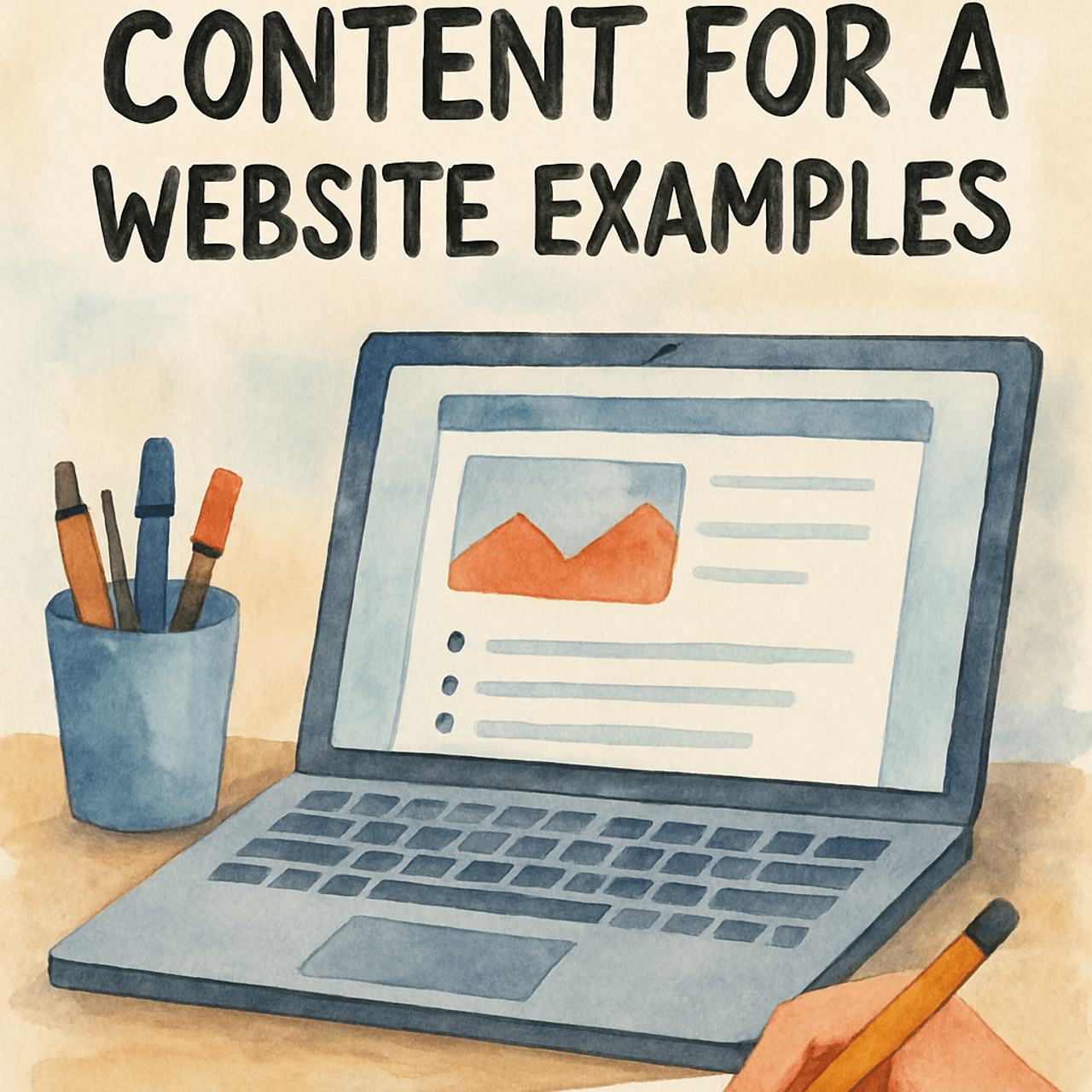
1. Introduction to Web Content Writing
Web content includes the text, images, videos, and interactive elements published on websites to inform, entertain, and guide visitors, playing a key role in capturing attention, building trust, and encouraging action. Clarity and relevance ensure users quickly find what they need and perceive the content as valuable, reducing bounce rates and boosting search engine rankings. While good content covers essential facts and reads smoothly, great content connects emotionally, anticipates questions, offers unique insights or solutions, and inspires readers to share or act.
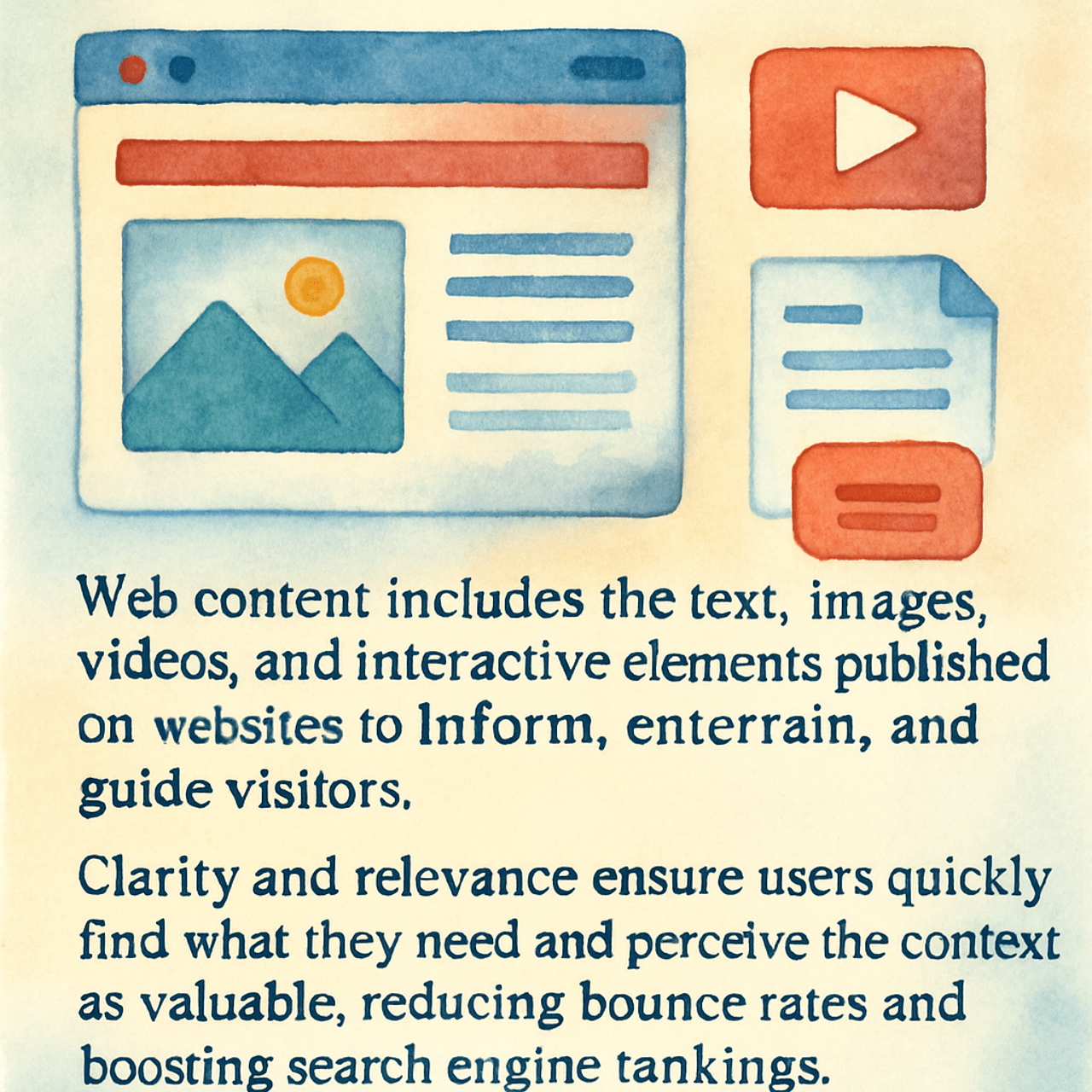
2. Researching and Planning Your Content
To create content that resonates, first define who you’re speaking to by mapping demographics, interests and pain points, then gather direct feedback through surveys or social media. Next, use tools like keyword planners and search trend analyzers to pinpoint the words and questions your audience is actually typing, shaping your topics around high-value terms. Finally, review competitor articles and posts to uncover overlooked angles or missing details—these gaps become your opportunity to stand out with fresh insights or more in-depth solutions.
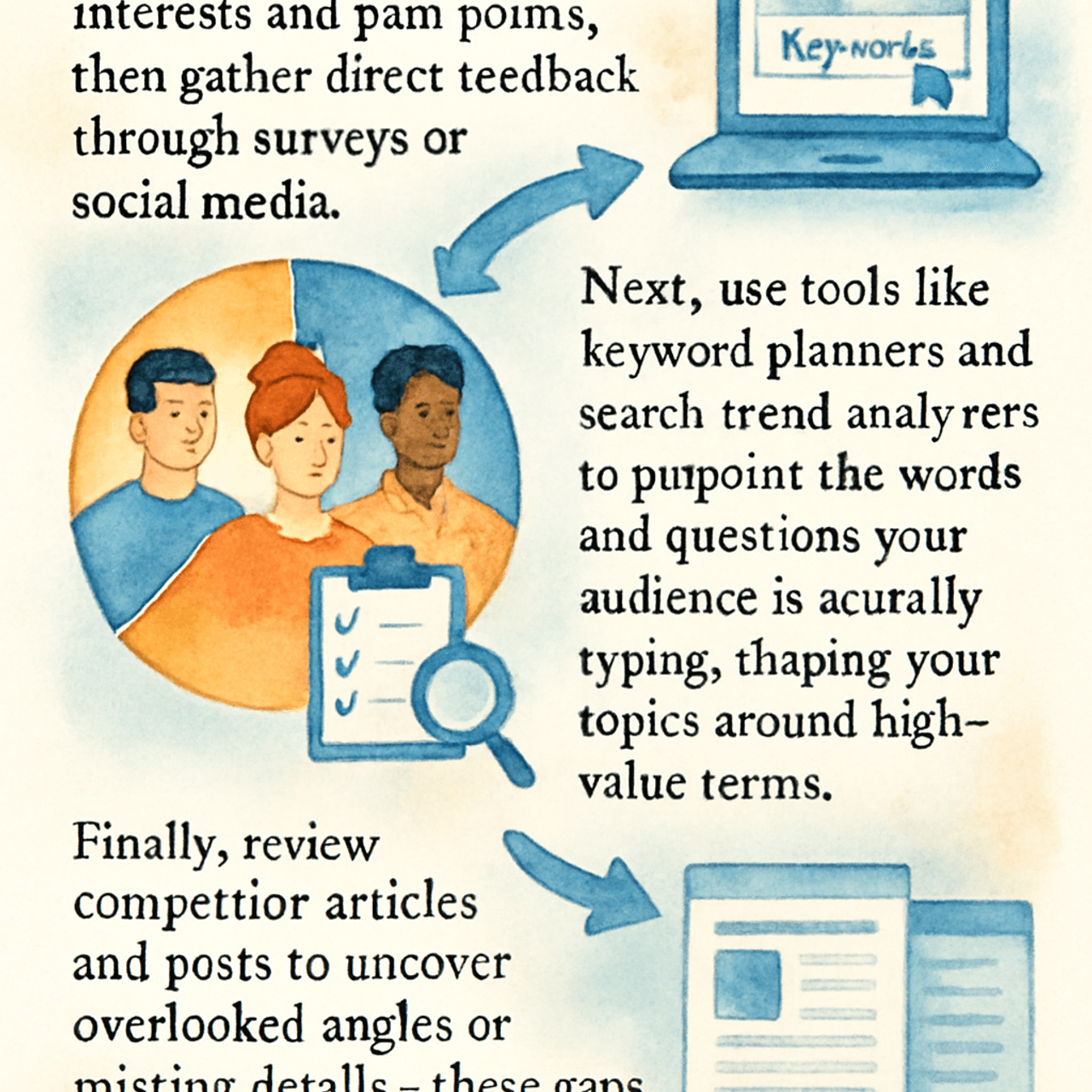
3. Crafting Attention-Grabbing Headlines
Effective headlines often start with numbers, ask intriguing questions, or include power words like exclusive or proven to spark reader interest. Keeping the length under sixty characters ensures readability and retains attention spans, especially on mobile devices. Finally, running A/B split tests on headline variations helps identify which approach delivers higher click-through rates and engagement.
4. Writing Compelling Introductions
Imagine kicking off your introduction with a surprising stat—like “Did you know 70% of readers bail after the first paragraph?” or a quick story about a student discovering the power of words. Next, immediately lay out what’s coming—three key takeaways, real-world examples, or hands-on exercises—so readers know exactly what they’ll walk away with. Keep the tone like you’re chatting over a snack, sprinkling in humor or relatable phrases to make them feel right at ease before diving in.
5. Structuring the Body for Readability
Dividing content with clear subheadings helps readers navigate the material and spot key ideas quickly. Breaking text into short paragraphs or bullet lists prevents readers from feeling overwhelmed and highlights crucial details efficiently. Including examples or brief case studies shows how concepts apply in real situations, making the content more engaging and memorable.
6. Integrating SEO Best Practices
Including your main keywords in headings not only clarifies the page’s focus for readers but also signals relevancy to search engines when integrated smoothly and contextually. Craft meta titles and descriptions by weaving in the primary keyword, keeping titles under 60 characters and descriptions under 160 to maximize visibility and click-through rates. Strategically place internal links to related content and external links to high-authority sources to guide users through your site and strengthen credibility without overwhelming the page.
7. Incorporating Visuals and Multimedia
Using relevant images tagged with clear alt text helps screen readers and gives context to all users. Short videos or interactive infographics can break down complex topics into digestible visuals and keep readers engaged. To maintain fast load times, compress files, choose appropriate formats, and balance multimedia elements with concise text.
8. Editing and Proofreading
Review each sentence for correct grammar, spelling and punctuation. Read your draft aloud to pick up on clunky wording that might trip up readers. Finally, apply editing software or style guidelines to keep your tone and formatting uniform throughout.
9. Examples and Ready-to-Use Templates
Grab a PDF of real-world website layouts to see professional content flow, plus a beginner-friendly sample guide that breaks down simple structures in action. Use these ready-to-print examples to understand headline hierarchy, paragraph length and call-to-action placement. Finally, customize each template—tweak headlines, tone and visuals—to match your brand voice and audience preferences.
10. Tailoring Content for Different Audiences
Instructors should adapt examples and tone to each skill level. – Students: use academic structures, such as thesis statements and citations, with example essays and researched content. – Beginners: stick to clear headings, simple paragraphs, and everyday vocabulary to demonstrate basic site formatting. – Advanced readers: dive into charts, statistical findings, and expert commentary to support arguments with real data. This ensures each audience can engage with and apply the content effectively.
11. Essential Tools and Resources
Popular content management systems include WordPress, Wix, and Drupal, offering flexible templates, plugins, and user-friendly interfaces to publish and manage web content. SEO platforms such as Ahrefs, SEMrush, and Moz help you research keywords, analyze backlinks, track rankings, and uncover opportunities to boost organic traffic. Grammar and readability tools like Grammarly and Hemingway App ensure your writing is clear, error-free, and engaging by highlighting mistakes and suggesting improvements.
Conclusion
By combining clear structure—like snappy headlines, scannable lists, and compelling calls to action—with targeted research, you guide readers smoothly from curiosity to conversion. Templates and sample PDFs (from website copy examples to beginner content writing samples) help you see proven layouts and adapt them to your niche, whether teaching students or engaging a specific demographic, while editing tools catch typos, measure readability, and enhance SEO value. Over time, refining your voice, monitoring performance metrics, and experimenting with tone and format transforms trial-and-error into a disciplined workflow that consistently delivers content resonating with both users and search engines.
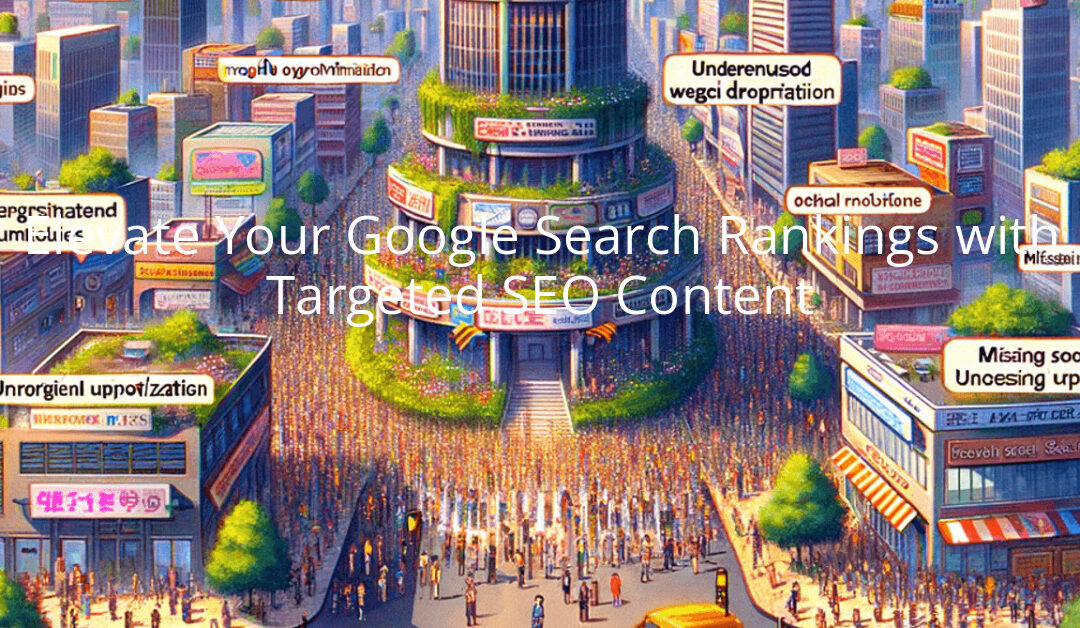
by ContentERP | Nov 4, 2024 | Uncategorized
 Picture this: You’ve crafted a beautiful website, stocked it with insightful articles and helpful tips, and now you’re waiting for the steady stream of visitors to arrive. But instead of a bustling hub of activity, your analytics page remains a ghost town. You refresh it. Still, a trickle. What happened to the traffic you expected?
Picture this: You’ve crafted a beautiful website, stocked it with insightful articles and helpful tips, and now you’re waiting for the steady stream of visitors to arrive. But instead of a bustling hub of activity, your analytics page remains a ghost town. You refresh it. Still, a trickle. What happened to the traffic you expected?
In a crowded online world, a quality website alone isn’t enough. If search engines aren’t seeing you, chances are, your audience won’t either. Google may be a data-driven giant, but it values relevance and accuracy just as much as technical prowess. Here, we’ll break down the five critical mistakes holding back your content from high search rankings and provide targeted strategies to fix them. Together, let’s set your content up for a clear path to the top.
Related: Going Beyond: Strategies to Amplify Your Content and Engage a Wider Audience
1. Neglecting Audience-Focused Keywords: Missing the Mark on Search Intent
Imagine you’re trying to find the latest bestseller at the library, but all the books are in the wrong sections. That’s the effect of using mismatched keywords in your content. Many creators fall into the trap of choosing high-traffic terms without considering their audience’s intent—leading to content that may attract a click but doesn’t satisfy the searcher’s need.
How to Get It Right: Choose keywords that resonate with your audience’s specific needs. For example, if your audience is searching for “budget-friendly family vacation spots,” don’t settle for generic “vacation tips.” Specific keywords tell Google exactly who your content is for. Tools like ContentERP’s keyword research module can guide you toward high-intent keywords that match your audience’s exact needs, helping you strike that ideal balance between relevance and search volume.
2. Crafting Forgettable Meta Descriptions: A Lost Opportunity for Attraction
Think of the meta description as a movie trailer for your content—a brief yet enticing snippet designed to pull readers in. Many websites either skip this crucial step or leave it to an automated generator. The result? A bland, uninspiring preview that doesn’t quite do justice to the content itself.
How to Get It Right: Write meta descriptions that combine intrigue with relevant keywords. Aim for clear and compelling summaries that hint at the value of your article without giving everything away. For instance, “Discover the top 10 ways to save on family vacations without skimping on fun” works better than a vague “Travel tips for families.” ContentERP’s description optimizer can help ensure your meta tags are unique, engaging, and perfectly tailored for the algorithm.
3. Ignoring Mobile Optimization: Failing to Meet Readers Where They Are
Today, over half of all searches come from mobile devices. Yet, despite this fact, many creators overlook mobile optimization, assuming their desktop-ready site will do the trick. Imagine opening a beautifully designed magazine that’s unreadable—font too small, images misplaced—when viewed on your smartphone.
How to Get It Right: Design with mobile in mind from the start. Ensure text, images, and menus are responsive and user-friendly on smaller screens. Google rewards mobile-friendly sites with higher rankings, so making your site accessible on all devices is an SEO essential. ContentERP’s mobile optimization tools allow you to see your site from a mobile user’s perspective, helping you smooth out any glitches and give users a seamless experience.
4. Overlooking the Importance of Alt Text: The Silent Booster for Visibility
In the world of SEO, images aren’t just visual elements—they’re opportunities to add context and keywords. But all too often, images are posted without descriptive alt text, leaving a critical SEO boost untapped. It’s like telling half the story and assuming everyone knows the rest.
How to Get It Right: Write concise, descriptive alt text that includes relevant keywords. Imagine you’re describing the image to someone who can’t see it: what essential details would help paint a clear picture? For example, rather than “picture of mountain,” try “sunrise over the Rocky Mountains with autumn foliage.” ContentERP’s alt text tool offers real-time prompts to help make the most of this simple yet powerful SEO strategy.
5. Posting Infrequent or Inconsistent Content: Losing Your Place in the Algorithm
SEO isn’t a set-it-and-forget-it game. Regularly published, high-quality content signals to search engines that your site is active, reliable, and worth revisiting. Yet many creators fail to keep up, posting sporadically or letting long stretches go by without fresh content. Imagine trying to keep a fire alive by adding wood once a month—it’s simply not enough to maintain momentum.
How to Get It Right: Build a content calendar that allows you to post consistently, whether weekly, bi-weekly, or monthly. Consistency keeps both readers and algorithms engaged. With ContentERP’s content scheduler, you can map out topics, plan publishing dates, and ensure a steady flow of new material—allowing you to keep your site fresh and Google’s attention firmly on your content.
Setting Your Content Up for Long-Lasting Success
 Imagine your website as a lively city center, with visitors flowing in from all corners, engaging with your work, and returning for more. With the right SEO strategies, your site can achieve this kind of vibrant visibility. Avoiding these five missteps—targeting the wrong keywords, underusing meta descriptions, neglecting mobile optimization, skipping alt text, and posting inconsistently—will set your content up for greater exposure, driving more traffic, and ultimately helping your business thrive.
Imagine your website as a lively city center, with visitors flowing in from all corners, engaging with your work, and returning for more. With the right SEO strategies, your site can achieve this kind of vibrant visibility. Avoiding these five missteps—targeting the wrong keywords, underusing meta descriptions, neglecting mobile optimization, skipping alt text, and posting inconsistently—will set your content up for greater exposure, driving more traffic, and ultimately helping your business thrive.
SEO doesn’t have to be overwhelming or mystifying. With ContentERP, it’s simpler than ever to keep your site in top shape. ContentERP’s suite of SEO tools, from keyword insights to mobile optimization checks, takes the guesswork out of search strategy, giving you more time to focus on creating content that resonates.
Ready to transform your content’s reach? Sign up for ContentERP today and let your website achieve the search ranking heights it deserves.
Related: Avoid These 5 Content Mistakes to Stay on Google’s Good Side

by ContentERP | Nov 3, 2024 | Uncategorized
 Imagine this: You’re the marketing lead for a thriving pet food company. You’ve got premium ingredients, a loyal customer base, and a unique brand voice that animal lovers adore. But there’s one glaring problem—a lackluster blog that feels more like a kennel than the thriving marketplace you envisioned. Your analytics dashboard is practically yawning, and while your competitors’ blogs are attracting droves of readers, yours is struggling to keep a handful interested. What went wrong?
Imagine this: You’re the marketing lead for a thriving pet food company. You’ve got premium ingredients, a loyal customer base, and a unique brand voice that animal lovers adore. But there’s one glaring problem—a lackluster blog that feels more like a kennel than the thriving marketplace you envisioned. Your analytics dashboard is practically yawning, and while your competitors’ blogs are attracting droves of readers, yours is struggling to keep a handful interested. What went wrong?
In today’s digital landscape, an unoptimized blog is like a door with a rusty hinge—it might open occasionally, but no one wants to push it. Effective content has the power to engage, entertain, and most importantly, convert readers into leads. But getting there isn’t always straightforward. This pet food company, initially clueless about content strategy, transformed its blog into a lead-generation powerhouse by avoiding these top five content mistakes. Let’s walk through each misstep, and then learn how they pivoted for success.
Related: Avoid These 5 Content Mistakes to Stay on Google’s Good Side
Mistake #1: Treating Keywords Like a Sprinkle of Catnip
 Keywords are the backbone of any successful SEO strategy, yet many blogs treat them like an afterthought, sprinkling in keywords sparingly or haphazardly. This pet food company’s original approach? A scattered “hope-for-the-best” method, using keywords in all the wrong places. They had keywords, yes—but these crucial terms were buried like bones in the backyard, far from where readers (and search engines) could find them.
Keywords are the backbone of any successful SEO strategy, yet many blogs treat them like an afterthought, sprinkling in keywords sparingly or haphazardly. This pet food company’s original approach? A scattered “hope-for-the-best” method, using keywords in all the wrong places. They had keywords, yes—but these crucial terms were buried like bones in the backyard, far from where readers (and search engines) could find them.
The Fix: Keyword integration is a deliberate art. With ContentERP’s SEO tools, this company learned to identify high-traffic keywords and place them strategically in headings, introductions, and meta descriptions. They transformed random, out-of-sight keywords into lead-generating power words, each expertly placed to pull the audience’s attention from the first scroll. Think of it like tossing your reader the ultimate treat, leading them exactly where you want them to go.
Mistake #2: Ignoring the Power of Visuals
 Picture this: a reader lands on a blog titled, “Top 10 Pet Food Ingredients Your Dog Will Love.” They’re excited, ready to discover insights about their furry friend’s diet. And then? A wall of text. Not a single image to break up the paragraphs, no graphics to illustrate the points, just rows of words and dry facts. It’s like inviting someone to a pet party and forgetting the pets.
Picture this: a reader lands on a blog titled, “Top 10 Pet Food Ingredients Your Dog Will Love.” They’re excited, ready to discover insights about their furry friend’s diet. And then? A wall of text. Not a single image to break up the paragraphs, no graphics to illustrate the points, just rows of words and dry facts. It’s like inviting someone to a pet party and forgetting the pets.
The Fix: A captivating blog post should be a feast for the eyes as well as the mind. With the help of ContentERP, this pet food company began incorporating high-quality visuals, infographics, and even videos into their posts. The result? Not only did readers spend more time on the page, but they engaged more, sharing content and exploring other blog posts. Visuals aren’t just decoration; they’re the appetizers that draw readers in and keep them invested in the main course.
Mistake #3: Skipping Out on Storytelling
 Have you ever read a blog post that felt like it was written by a robot? For a while, this pet food company’s content did too. Every article sounded like a textbook. They were churning out pet care tips, ingredient lists, and nutrition facts without any personality, forgetting that readers are drawn to stories, not dry information.
Have you ever read a blog post that felt like it was written by a robot? For a while, this pet food company’s content did too. Every article sounded like a textbook. They were churning out pet care tips, ingredient lists, and nutrition facts without any personality, forgetting that readers are drawn to stories, not dry information.
The Fix: A successful blog post doesn’t just educate; it resonates. When this company began weaving storytelling into their articles—sharing heartwarming tales of pets, customer testimonials, and even playful narratives about fictional “Pet of the Month” characters—engagement skyrocketed. Suddenly, their readers felt a connection, as if they were part of a community rather than on the receiving end of a sales pitch. With ContentERP’s content guidance tools, even the driest topic was transformed into an engaging narrative that kept readers coming back for more.
Mistake #4: Missing Out on Internal Linking
 Imagine walking through a pet store with endless aisles and shelves but no signage or suggestions to guide you. You’re likely to wander around without a clear sense of direction, eventually losing interest and leaving. This was essentially what happened on the company’s blog—they had fantastic content scattered across the site but no way to link related posts together.
Imagine walking through a pet store with endless aisles and shelves but no signage or suggestions to guide you. You’re likely to wander around without a clear sense of direction, eventually losing interest and leaving. This was essentially what happened on the company’s blog—they had fantastic content scattered across the site but no way to link related posts together.
The Fix: Internal linking is the digital equivalent of a guided tour, connecting readers with content that deepens their interest. By using ContentERP’s tools, this pet food company created a seamless journey for their readers. They started linking related articles, product pages, and popular posts, building a natural flow that encouraged readers to explore. Now, instead of bouncing from the page, readers were finding themselves pleasantly lost in a maze of engaging content, each click bringing them closer to becoming a lead.
Mistake #5: Forgetting the Call to Action (CTA)
 Lastly, one of the biggest and most common content mistakes is neglecting the call to action. This pet food company’s blog had loads of information but left readers with nowhere to go next. Like a play with no final act, their blog posts simply ended.
Lastly, one of the biggest and most common content mistakes is neglecting the call to action. This pet food company’s blog had loads of information but left readers with nowhere to go next. Like a play with no final act, their blog posts simply ended.
The Fix: Every blog post is an invitation, and a CTA is the RSVP. ContentERP taught this team the importance of guiding readers toward a next step, whether that was signing up for a newsletter, downloading a pet care guide, or exploring their best-selling products. Each article now ended with a clear CTA, gently nudging readers to take action. What once felt like an abrupt ending was transformed into a beginning—the start of a customer journey that led to deeper brand engagement and ultimately, conversions.
The Road to Lead Generation: A Blog Renaissance
 Within months of implementing these changes, the pet food company saw a profound transformation. Their blog, once just a lifeless collection of posts, had become a lively lead-generating engine. Organic traffic soared, engagement metrics improved, and the bounce rate dropped significantly. It wasn’t just a blog anymore; it was a powerful extension of their brand, a community for pet owners, and an educational resource that built trust.
Within months of implementing these changes, the pet food company saw a profound transformation. Their blog, once just a lifeless collection of posts, had become a lively lead-generating engine. Organic traffic soared, engagement metrics improved, and the bounce rate dropped significantly. It wasn’t just a blog anymore; it was a powerful extension of their brand, a community for pet owners, and an educational resource that built trust.
Conclusion: Setting Your Content Free with ContentERP
Revitalizing a blog is like rehoming a pet in a spacious, welcoming environment where it can thrive. With the right tools, like those provided by ContentERP, any blog—no matter how lackluster—can become a source of dynamic engagement and growth. Imagine your content as a story waiting to unfold, just a few strategic tweaks away from finding its audience.
In the world of SEO and content strategy, you’re never simply producing content; you’re opening doors, inviting readers in, and setting the stage for meaningful connections. Are you ready to give your blog the life it deserves? Let ContentERP be your guide. Sign up today and watch your content take flight, reaching new audiences and converting them into loyal customers. After all, your content is a journey, not a destination—let’s make it one worth taking.
Related: Why SEO Matters Just as Much on YouTube
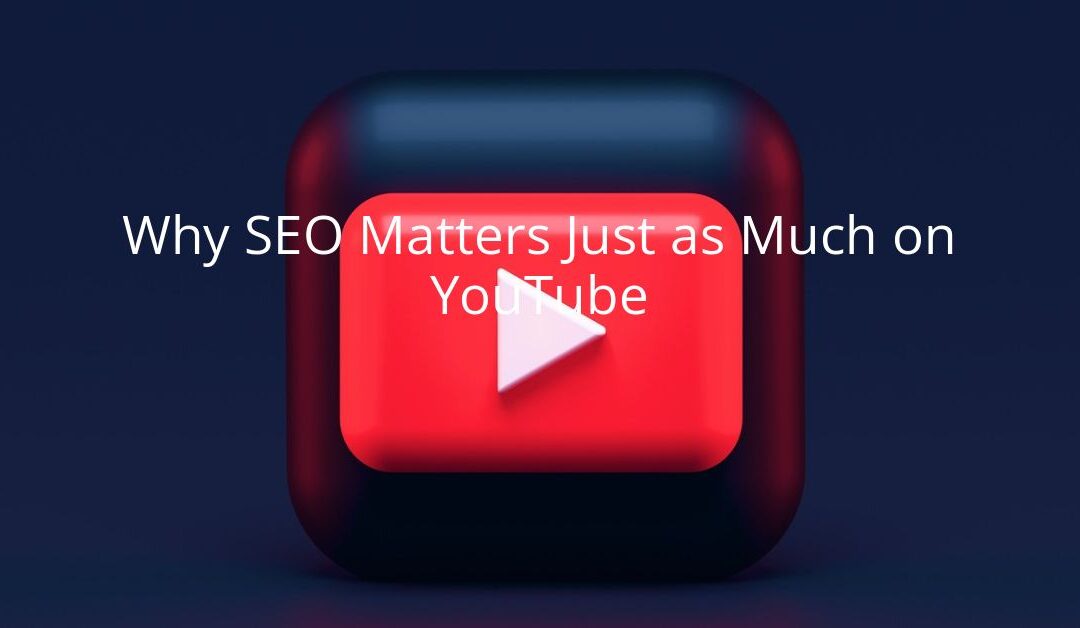
by ContentERP | Nov 1, 2024 | Uncategorized
 You’ve just finished editing your most polished video to date. It’s dynamic, insightful, and exactly what your audience needs. You hit “upload,” and wait for the views to pour in. Hours pass, then days—and all you have to show for it are a few scattered clicks and your mom’s supportive thumbs-up. What went wrong?
You’ve just finished editing your most polished video to date. It’s dynamic, insightful, and exactly what your audience needs. You hit “upload,” and wait for the views to pour in. Hours pass, then days—and all you have to show for it are a few scattered clicks and your mom’s supportive thumbs-up. What went wrong?
In the crowded arena of YouTube, where over 500 hours of content are uploaded every minute, quality alone isn’t enough to get noticed. Just as with traditional web pages, SEO is the quiet but powerful engine that can transform visibility, bringing your content from the shadows into the spotlight. But YouTube SEO isn’t just a replication of blog or website tactics; it has its own set of rules, best practices, and common missteps. Here, we’ll walk through the top five mistakes creators make with YouTube SEO, mistakes that could be holding your content back—and the strategies to fix them.
Related: Link-Building 101: The Foundation for Powerful SEO Results
1. Ignoring Keywords in Titles: The “Invisible Headline” Syndrome
 Your video’s title is the first, and possibly only, impression viewers get before deciding to click. Yet, many creators make the mistake of overlooking keywords in this crucial space. Picture a librarian shelving your video in the darkest corner, all because it’s missing the title tags that tell YouTube (and your audience) what it’s all about. Without those keywords, your video is nearly invisible to the people searching for exactly what you offer.
Your video’s title is the first, and possibly only, impression viewers get before deciding to click. Yet, many creators make the mistake of overlooking keywords in this crucial space. Picture a librarian shelving your video in the darkest corner, all because it’s missing the title tags that tell YouTube (and your audience) what it’s all about. Without those keywords, your video is nearly invisible to the people searching for exactly what you offer.
How to Get It Right: Incorporate primary keywords naturally within your title to match what viewers are searching for. If your video is about “Top Communication Tips for Relationships,” make that title clear and to the point—don’t get overly creative or vague. Tools like ContentERP can help ensure your titles are search-friendly while staying enticing enough to pique viewer interest.
2. Skipping Descriptions: The Case of the Silent Guide
 Imagine exploring a new city without a map. That’s what YouTube feels like to users and search engines alike when a video has no description. A description is your chance to tell YouTube’s algorithm exactly what your video entails, yet many creators skip or skim over it, thinking it doesn’t impact viewership.
Imagine exploring a new city without a map. That’s what YouTube feels like to users and search engines alike when a video has no description. A description is your chance to tell YouTube’s algorithm exactly what your video entails, yet many creators skip or skim over it, thinking it doesn’t impact viewership.
How to Get It Right: Write descriptions that include relevant keywords and provide a snapshot of your video’s content. Think of it as a mini-article that enhances your video’s theme, hints at important points, and drives home those all-important search terms. ContentERP’s description optimizer offers real-time feedback on length, readability, and keyword inclusion, helping you create descriptions that add value to both viewers and the algorithm.
3. Neglecting Thumbnails: The Face of First Impressions
 A video without a thoughtful thumbnail is like a novel without a cover. You could have created a masterpiece, but viewers might scroll past if there’s nothing eye-catching. YouTube itself has repeatedly noted that thumbnails are one of the most critical factors in click-through rates. Ignoring them means forfeiting a golden opportunity to stand out.
A video without a thoughtful thumbnail is like a novel without a cover. You could have created a masterpiece, but viewers might scroll past if there’s nothing eye-catching. YouTube itself has repeatedly noted that thumbnails are one of the most critical factors in click-through rates. Ignoring them means forfeiting a golden opportunity to stand out.
How to Get It Right: Design custom thumbnails that give viewers a taste of the video’s essence. Use bold text, high-quality images, and vibrant colors that align with your branding. And don’t be afraid to add a dash of personality—viewers love faces, reactions, and expressions that offer a hint of the video’s emotional tone. ContentERP’s design suite can streamline this process, offering thumbnail templates that grab attention and improve your video’s CTR.
Related: Mastering Instagram: What Your Brand Needs to Do
4. Overlooking the Power of Closed Captions: The Silent Opportunity
 Captions aren’t just for accessibility; they’re another layer of text that YouTube uses to understand what your video is about. Yet, many creators skip closed captions, missing out on the SEO advantages they bring. It’s like giving your video a voice without expecting it to be heard in a library of content.
Captions aren’t just for accessibility; they’re another layer of text that YouTube uses to understand what your video is about. Yet, many creators skip closed captions, missing out on the SEO advantages they bring. It’s like giving your video a voice without expecting it to be heard in a library of content.
How to Get It Right: Adding accurate closed captions not only boosts accessibility but can also improve your video’s ranking. Captions should reflect your script closely and include keywords naturally. With ContentERP’s tools, you can quickly generate and edit captions that enhance SEO while making your video accessible to a wider audience.
5. Failing to Engage with Viewers: The Missing Spark of Conversation
 Uploading a video without interacting with viewers afterward is like hosting a party and never acknowledging your guests. YouTube values engagement—likes, shares, and especially comments—as indicators that a video is worth promoting. Skipping out on this crucial interaction can keep your content from reaching its potential.
Uploading a video without interacting with viewers afterward is like hosting a party and never acknowledging your guests. YouTube values engagement—likes, shares, and especially comments—as indicators that a video is worth promoting. Skipping out on this crucial interaction can keep your content from reaching its potential.
How to Get It Right: Encourage comments by asking questions within the video, respond to viewer comments thoughtfully, and make each interaction feel authentic. Acknowledge the viewers who took time to watch and engage with your content; it not only builds loyalty but signals to YouTube that your video is sparking conversations. ContentERP’s engagement tracker helps you monitor and respond to comments, ensuring every interaction is a meaningful one.
Elevating Your YouTube Game with Smart SEO
 Picture your content at the top of YouTube search results, where each upload is greeted with a steady stream of viewers, likes, and comments. This is the potential that lies within YouTube SEO. While it’s tempting to think of SEO as a box to check, true optimization is an ongoing process that layers in small but effective practices. By avoiding these common missteps, you can turn each video from an isolated upload into part of a larger strategy that elevates your brand.
Picture your content at the top of YouTube search results, where each upload is greeted with a steady stream of viewers, likes, and comments. This is the potential that lies within YouTube SEO. While it’s tempting to think of SEO as a box to check, true optimization is an ongoing process that layers in small but effective practices. By avoiding these common missteps, you can turn each video from an isolated upload into part of a larger strategy that elevates your brand.
Ready to maximize your YouTube presence? ContentERP’s robust toolkit makes the process of optimizing YouTube content easier and more effective. From title analysis and description optimization to custom thumbnails and audience engagement tracking, ContentERP provides everything you need to create content that truly connects. Sign up with ContentERP today, and let your videos reach new heights in visibility and engagement.
Related: Avoid These 5 Content Mistakes to Stay on Google’s Good Side
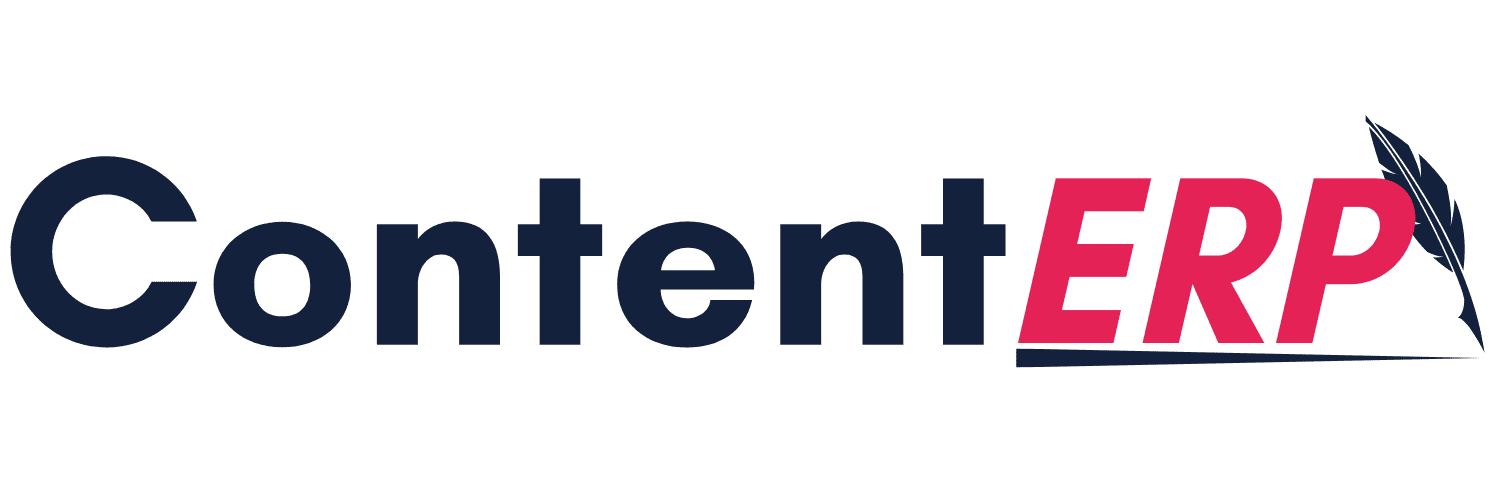


 Imagine this: You’re the marketing lead for a thriving pet food company. You’ve got premium ingredients, a loyal customer base, and a unique brand voice that animal lovers adore. But there’s one glaring problem—a lackluster blog that feels more like a kennel than the thriving marketplace you envisioned. Your analytics dashboard is practically yawning, and while your competitors’ blogs are attracting droves of readers, yours is struggling to keep a handful interested. What went wrong?
Imagine this: You’re the marketing lead for a thriving pet food company. You’ve got premium ingredients, a loyal customer base, and a unique brand voice that animal lovers adore. But there’s one glaring problem—a lackluster blog that feels more like a kennel than the thriving marketplace you envisioned. Your analytics dashboard is practically yawning, and while your competitors’ blogs are attracting droves of readers, yours is struggling to keep a handful interested. What went wrong?
 Picture this: a reader lands on a blog titled, “Top 10 Pet Food Ingredients Your Dog Will Love.” They’re excited, ready to discover insights about their furry friend’s diet. And then? A wall of text. Not a single image to break up the paragraphs, no graphics to illustrate the points, just rows of words and dry facts. It’s like inviting someone to a pet party and forgetting the pets.
Picture this: a reader lands on a blog titled, “Top 10 Pet Food Ingredients Your Dog Will Love.” They’re excited, ready to discover insights about their furry friend’s diet. And then? A wall of text. Not a single image to break up the paragraphs, no graphics to illustrate the points, just rows of words and dry facts. It’s like inviting someone to a pet party and forgetting the pets. Have you ever read a blog post that felt like it was written by a robot? For a while, this pet food company’s content did too. Every article sounded like a textbook. They were churning out pet care tips, ingredient lists, and nutrition facts without any personality, forgetting that readers are drawn to stories, not dry information.
Have you ever read a blog post that felt like it was written by a robot? For a while, this pet food company’s content did too. Every article sounded like a textbook. They were churning out pet care tips, ingredient lists, and nutrition facts without any personality, forgetting that readers are drawn to stories, not dry information. Imagine walking through a pet store with endless aisles and shelves but no signage or suggestions to guide you. You’re likely to wander around without a clear sense of direction, eventually losing interest and leaving. This was essentially what happened on the company’s blog—they had fantastic content scattered across the site but no way to link related posts together.
Imagine walking through a pet store with endless aisles and shelves but no signage or suggestions to guide you. You’re likely to wander around without a clear sense of direction, eventually losing interest and leaving. This was essentially what happened on the company’s blog—they had fantastic content scattered across the site but no way to link related posts together. Lastly, one of the biggest and most common content mistakes is neglecting the call to action. This pet food company’s blog had loads of information but left readers with nowhere to go next. Like a play with no final act, their blog posts simply ended.
Lastly, one of the biggest and most common content mistakes is neglecting the call to action. This pet food company’s blog had loads of information but left readers with nowhere to go next. Like a play with no final act, their blog posts simply ended. Within months of implementing these changes, the pet food company saw a profound transformation. Their blog, once just a lifeless collection of posts, had become a lively lead-generating engine. Organic traffic soared, engagement metrics improved, and the bounce rate dropped significantly. It wasn’t just a blog anymore; it was a powerful extension of their brand, a community for pet owners, and an educational resource that built trust.
Within months of implementing these changes, the pet food company saw a profound transformation. Their blog, once just a lifeless collection of posts, had become a lively lead-generating engine. Organic traffic soared, engagement metrics improved, and the bounce rate dropped significantly. It wasn’t just a blog anymore; it was a powerful extension of their brand, a community for pet owners, and an educational resource that built trust.
 You’ve just finished editing your most polished video to date. It’s dynamic, insightful, and exactly what your audience needs. You hit “upload,” and wait for the views to pour in. Hours pass, then days—and all you have to show for it are a few scattered clicks and your mom’s supportive thumbs-up. What went wrong?
You’ve just finished editing your most polished video to date. It’s dynamic, insightful, and exactly what your audience needs. You hit “upload,” and wait for the views to pour in. Hours pass, then days—and all you have to show for it are a few scattered clicks and your mom’s supportive thumbs-up. What went wrong? Your video’s title is the first, and possibly only, impression viewers get before deciding to click. Yet, many creators make the mistake of overlooking keywords in this crucial space. Picture a librarian shelving your video in the darkest corner, all because it’s missing the title tags that tell YouTube (and your audience) what it’s all about. Without those keywords, your video is nearly invisible to the people searching for exactly what you offer.
Your video’s title is the first, and possibly only, impression viewers get before deciding to click. Yet, many creators make the mistake of overlooking keywords in this crucial space. Picture a librarian shelving your video in the darkest corner, all because it’s missing the title tags that tell YouTube (and your audience) what it’s all about. Without those keywords, your video is nearly invisible to the people searching for exactly what you offer. Imagine exploring a new city without a map. That’s what YouTube feels like to users and search engines alike when a video has no description. A description is your chance to tell YouTube’s algorithm exactly what your video entails, yet many creators skip or skim over it, thinking it doesn’t impact viewership.
Imagine exploring a new city without a map. That’s what YouTube feels like to users and search engines alike when a video has no description. A description is your chance to tell YouTube’s algorithm exactly what your video entails, yet many creators skip or skim over it, thinking it doesn’t impact viewership. A video without a thoughtful thumbnail is like a novel without a cover. You could have created a masterpiece, but viewers might scroll past if there’s nothing eye-catching. YouTube itself has repeatedly noted that
A video without a thoughtful thumbnail is like a novel without a cover. You could have created a masterpiece, but viewers might scroll past if there’s nothing eye-catching. YouTube itself has repeatedly noted that  Captions aren’t just for accessibility; they’re another layer of text that YouTube uses to understand what your video is about. Yet, many creators skip closed captions, missing out on the SEO advantages they bring. It’s like giving your video a voice without expecting it to be heard in a library of content.
Captions aren’t just for accessibility; they’re another layer of text that YouTube uses to understand what your video is about. Yet, many creators skip closed captions, missing out on the SEO advantages they bring. It’s like giving your video a voice without expecting it to be heard in a library of content. Uploading a video without interacting with viewers afterward is like hosting a party and never acknowledging your guests. YouTube values engagement—likes, shares, and especially comments—as indicators that a video is worth promoting. Skipping out on this crucial interaction can keep your content from reaching its potential.
Uploading a video without interacting with viewers afterward is like hosting a party and never acknowledging your guests. YouTube values engagement—likes, shares, and especially comments—as indicators that a video is worth promoting. Skipping out on this crucial interaction can keep your content from reaching its potential. Picture your content at the top of YouTube search results, where each upload is greeted with a steady stream of viewers, likes, and comments. This is the potential that lies within YouTube SEO. While it’s tempting to think of SEO as a box to check, true optimization is an ongoing process that layers in small but effective practices. By avoiding these common missteps, you can turn each video from an isolated upload into part of a larger strategy that elevates your brand.
Picture your content at the top of YouTube search results, where each upload is greeted with a steady stream of viewers, likes, and comments. This is the potential that lies within YouTube SEO. While it’s tempting to think of SEO as a box to check, true optimization is an ongoing process that layers in small but effective practices. By avoiding these common missteps, you can turn each video from an isolated upload into part of a larger strategy that elevates your brand.